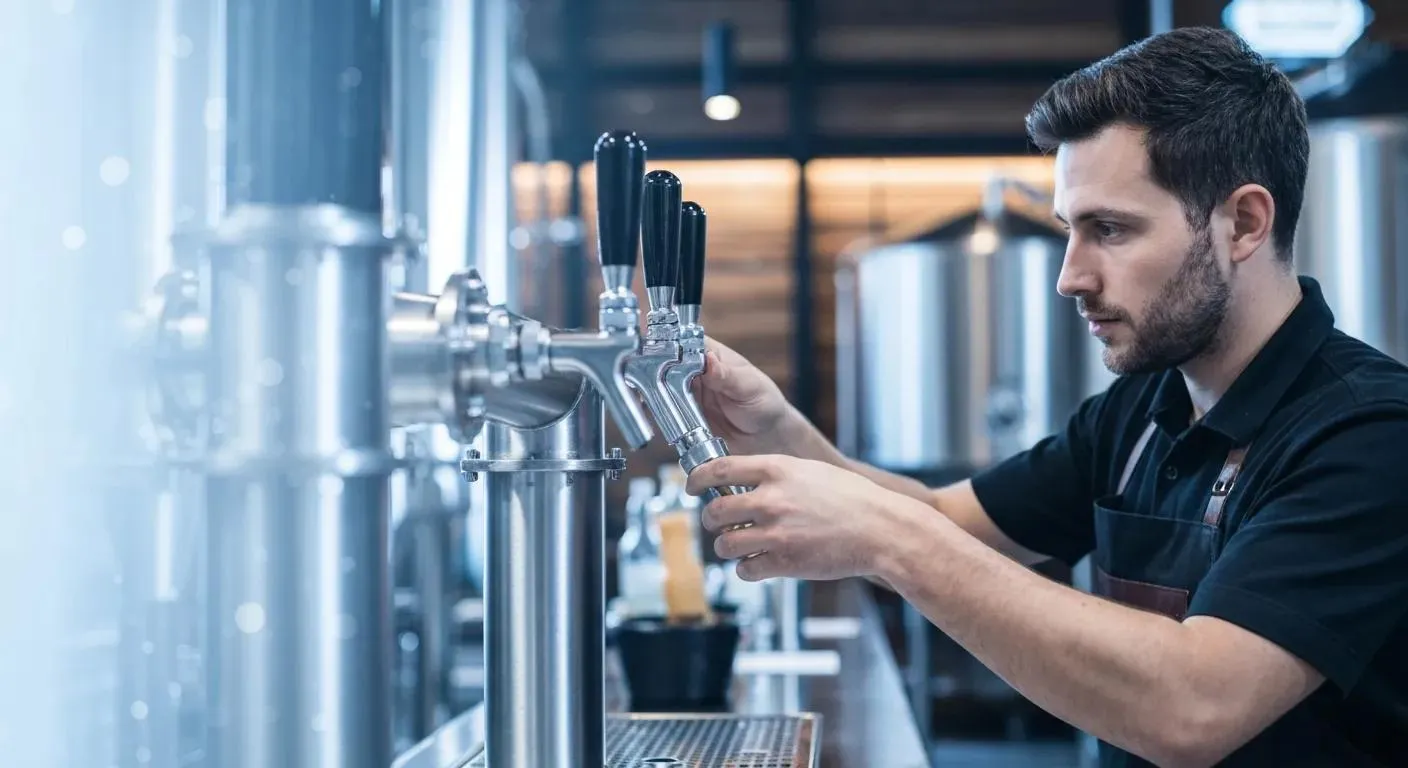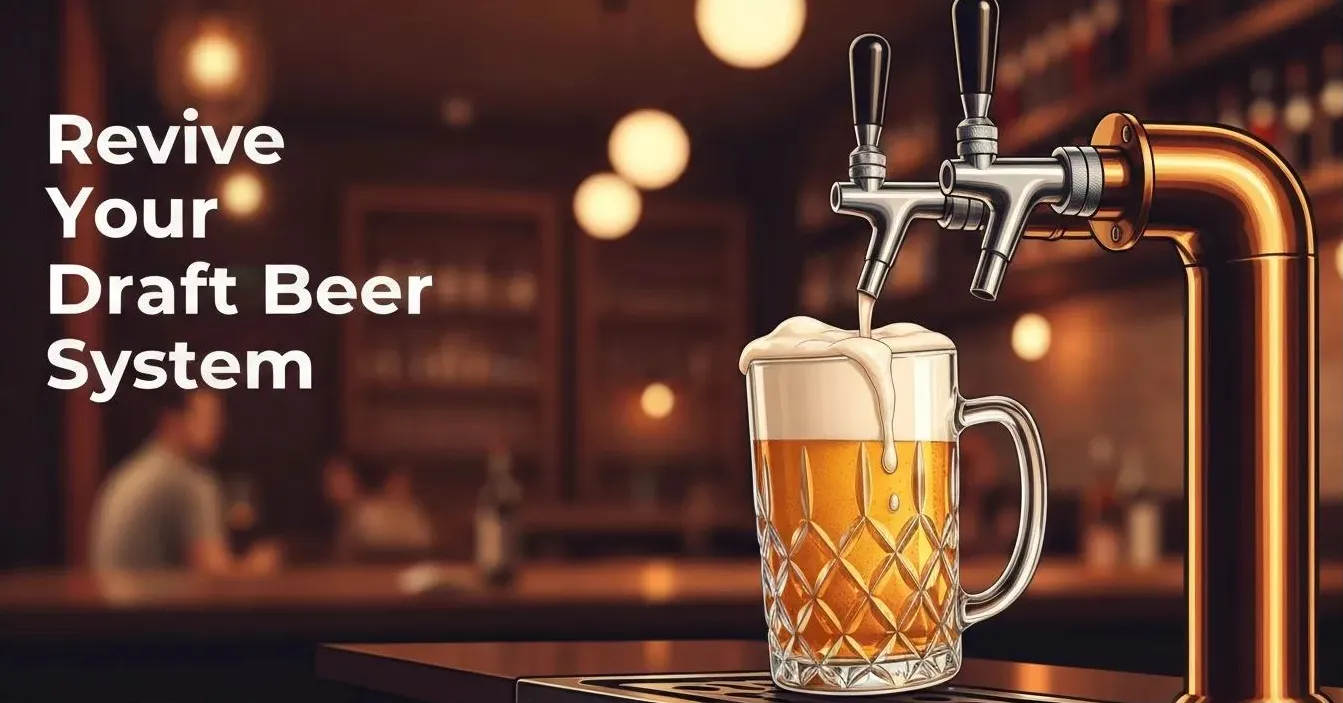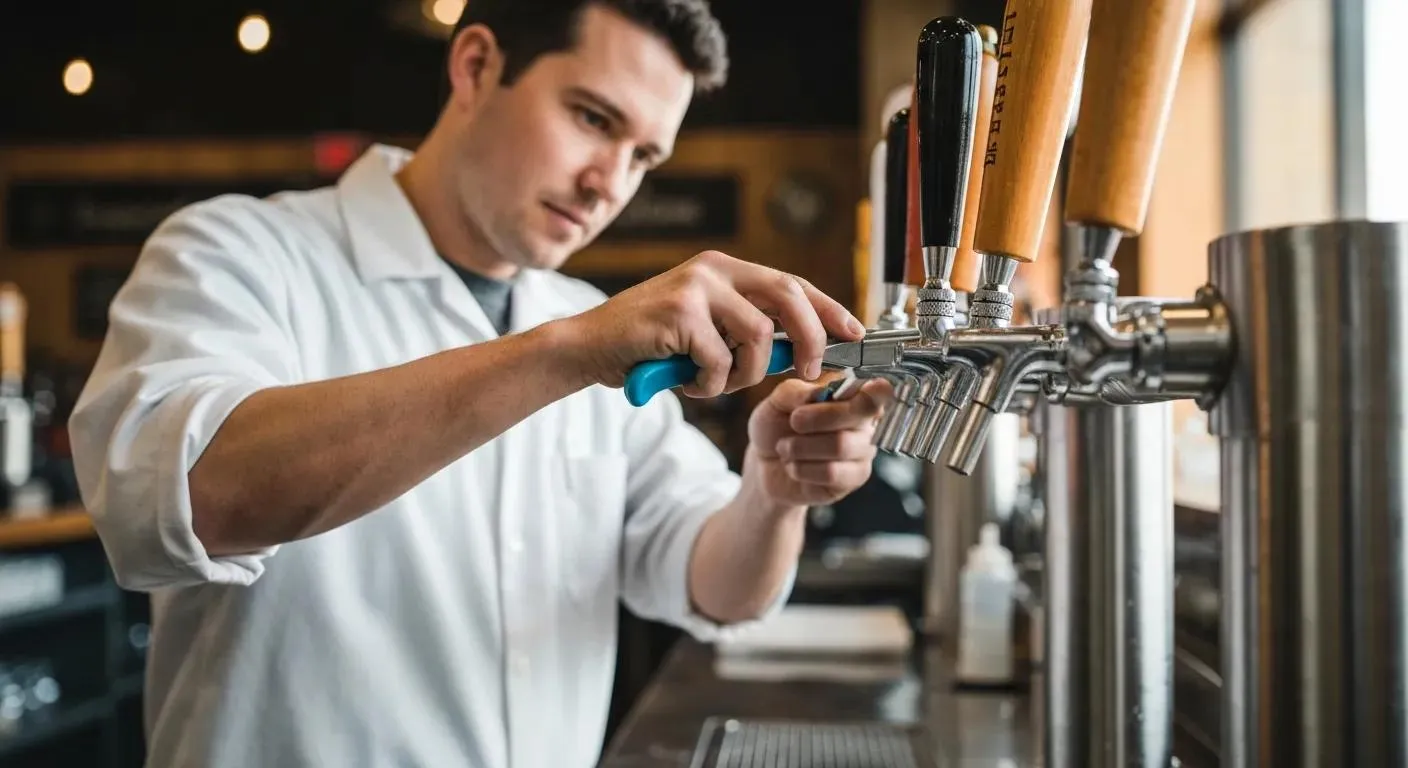Draft Beer Dispenser: Essential Guide to Choosing the Best System

If you’re a beer enthusiast looking to enjoy fresh, draft beer, a draft beer dispenser might be just what you need. Draft beer dispensers allow you to manually pour draft beer, offering a superior experience compared to drinking beer from a bottle, with enhanced freshness and taste. With various models available, choosing the right one can enhance your bar experience.
Draft beer dispensers come in different shapes and sizes, from personal devices like single keg kegerators. All the way up to multiple beer tower locations on property pouring hundreds of feet from eh cooler walk-in.
Equipping your draft beer dispenser involves understanding its components and proper installation. From CO2 cylinders to temperature controls, knowing how to maintain and operate these devices ensures a smooth, hassle-free experience. Whether you’re hosting a party or enjoying a quiet evening, having draft beer on tap elevates any occasion.
Key Takeaways
- Draft beer dispensers help serve draught beer.
- Models range from personal dispensers to full-size commercial systems.
- Components and maintenance are essential for smooth operation.
Types of Draft Beer Dispensers
Beer lovers have various options for dispensing draft beer in commercial settings. These options help keep beer at the perfect temperature and ensure each pour is smooth. These systems are compatible with different types of cans and bottles, emphasizing their versatility. Key types include kegerators, glycol cooling systems, and direct-draw systems.
Using a draft beer dispenser machine offers additional benefits such as compact size, lightweight design, and an enhanced user experience.
Kegerators
Kegerators are popular for home use and small bars. They are refrigerated units designed to hold one or more kegs. Built-in faucets and dispensers make pouring easy. The beer stays fresh and cold, usually set around 38°F. Kegerators are ideal for dispensing various beer styles, including lagers.
Kegerators often come with a draft beer tower, which can hold multiple faucets. This allows for more than one type of beer to be dispensed from a single kegerator. They are convenient, easy to install, and a great way to enjoy draft beer at home.

Glycol Cooling Systems
Glycol cooling systems are ideal for bars and restaurants requiring long-distance beer dispensing. These systems use a mixture of water and glycol to keep the beer lines cold. The lines run from the keg storage to the tap, maintaining a constant temperature.
Long-draw systems are often used with glycol cooling to move beer over long distances. These setups ensure the beer remains at optimum temperature, preventing foaming and spoilage. T-towers can be part of these systems, allowing multiple taps to be grouped together.
Direct-Draw Systems
Direct-draw systems are straightforward and commonly used in small bars and restaurants. These systems store kegs directly below the tap in a refrigerated cabinet.
The direct-draw setup includes the beer lines and taps integrated into the unit. This type of setup is simple and efficient, reducing the chance of temperature fluctuations that can affect beer quality. Direct-draw systems are also relatively easy to maintain and install.

Choosing the right draft beer dispenser depends on the specific needs, space, and setup requirements of the user. Each system offers unique benefits, ensuring that beer is served perfectly every time.
Components and Installation
Installing a draft beer dispenser requires different components working together to ensure a smooth pour. Each part, from the tap tower to the beer line, plays a crucial role in delivering the perfect glass of beer. Understanding these components and their installation can significantly enhance the brewing process and overall beer quality.
Draft Beer Towers
The draft beer tower is the central feature serving as a kind of bridge between the keg and the glass. Towers come in various styles and finishes, often made from stainless steel for durability.
Towers house the faucets and enable multiple taps from one location. Glycol-cooled towers are common in bars, using glycol to maintain beer temperature.

They need to be properly cleaned to prevent build-up. Incorrect installation can lead to erratic pours and temperature issues.
Faucets and Shanks
Faucets control the flow of wine or beer into the glass. Most are made from chrome-plated brass or stainless steel for easy cleaning and resistance to wear.

Shanks connect the faucet to the beer line, running through the wall or bar countertop. Faucet and shank placement directly impacts pour quality.
Lever faucets are widely used, offering simple control over beer flow.
Keg Couplers and Kegs
Keg couplers attach the keg to the beer line system, connecting the two via an airtight seal. Different beers use different types of couplers, such as D-system for most American beers sold.

The coupler ensures consistent pressure, pushing beer out of the keg. Regularly checking for wear and tear can prevent issues.
Kegs store and transport beer under pressure, typically in stainless steel containers.
Beer Line and Tubing
Beer lines and tubing transport beer from the keg to the faucet. Often made of vinyl or polyethylene, they need to be sturdy and clean.

Different lines can be used for different types and flavors of beers. Glycol systems often use special tubing to regulate temperature.
Regular cleaning prevents spoilage and maintains taste. Proper length and diameter are important to avoid foaming and other issues. Cutting corners on quality here can ruin the entire system.
Operation and Maintenance
Maintaining a draft beer dispenser involves ensuring a consistent flow of beer, proper cleanliness, and addressing common issues that may arise. Each of these aspects is crucial for delivering a great-tasting craft beer.
Pouring the Perfect Pint
Pouring the perfect pint starts with the right equipment settings to achieve a perfect pour. Set the CO2 pressure according to the beer type. Most domestic beers require 12-15 PSI, while stouts need around 30-40 PSI. Maintain a consistent beer temperature of 38°F.
When pouring, hold the glass at a 45-degree angle and open the faucet fully. As the glass fills, gradually straighten it. This technique creates the ideal amount of foam (head), enhancing the beer’s aroma and flavor.
Cleaning and Sanitization
Keeping beer lines clean is essential to maintain the beer's taste and prevent contamination. Clean the beer lines every two weeks. This involves flushing them with cleaning solution and water. Every three months, disassemble and hand-clean all parts, including FOB devices and couplers.

Always ensure drip trays are cleaned daily to avoid buildup. Clear records of all cleaning activities should be posted in the keg cooler to ensure maintenance schedules are followed.
Troubleshooting Common Issues
Common issues in draft beer systems include foamy pours and inconsistent flow rates. Foamy pours can result from improper CO2 pressure or dirty beer lines. Check the pressure settings and clean the lines regularly.

Inconsistent flow rates may be due to temperature fluctuations or kinks in the beer lines. Maintaining a stable temperature and checking for line obstructions can resolve these problems. Regular maintenance ensures the system operates smoothly, providing the best beer experience.
Purchasing and Accessories
When considering the purchase of a draft beer dispenser, several factors come into play. These include selecting the right model, exploring customization options, and evaluating costs.
Choosing the Right Dispenser
Choosing the correct draft beer dispenser is crucial. Brewing your first beer with our product is a breeze, offering an enjoyable and positive experience. Factors like the size of the unit, its cooling system, and placement (home or commercial) are key. Kegerator.com offers a variety of kegerators to fit different budgets and tastes.
It’s important to assess inventory levels to ensure availability and timely delivery. Consulting with experts can further help in the selection process to meet specific needs and preferences of customers.
Customization Options
Customization can enhance the functionality and style of a draft beer dispenser. Options include different tap handles, drip trays, and towers.
Customized cooling systems, can also be tailored to specific types of beverages. Available accessories can include CO2 cylinders, temperature control features, and branded components. Personalization not only improves performance but also complements the space’s aesthetics.
Associated Costs
The cost of a draft beer dispenser can vary widely based on several factors. Basic models may start at a few hundred dollars, while more advanced systems with multiple taps and custom features can run into the thousands.
Additional costs may be incurred for accessories, such as CO2 cylinders, cleaning kits, and additional taps. Evaluating these costs and comparing them with other draft beer equipment companies can help in making an informed decision. Constantly reviewing the terms of use and warranty information is also crucial for long-term satisfaction.
Summary
A draft beer dispenser is a system designed to serve beer from a keg to fill a glass, ensuring freshness and proper carbonation. Restaurants, bars, and homes use these systems to pour high-quality draft beer.
Main Components:
- Kegs: Hold the beer.
- CO2 Tanks: Provide the pressure to push the beer through the lines.
- Beer Towers: Dispense the beer.
The kegs used can vary in size from a full-size half barrel to smaller options like the sixth barrel keg. Different setups can handle multiple kegs at once, allowing for a variety of beers on tap.
Types of Draft Beer Dispensers:
- Single tap systems
- Double tap systems
- Multi-tap systems
These setups can cater to different venues, from small bars to large restaurants.
Advantages:
- Freshness: Beer stays fresh longer.
- Convenience: Easy to pour and serve.
- Variety: Multiple beers can be offered.
Maintenance is Key:
Regular cleaning and upkeep ensure the system runs smoothly. This involves cleaning the lines, replacing CO2 tanks, and checking connections.
For home use, many enjoy the Ivation Full Size Kegerator. This system fits various keg sizes and provides a convenient way to enjoy draft beer at home.
For commercial setups, Draft Beer Systems: A Comprehensive Guide for Optimal Performance can be an excellent resource for best practices and detailed instructions.
In summary, a draft beer dispenser ensures a high-quality beer experience for all kinds of venues and parties. They keep beer fresh and make serving straightforward, provided regular maintenance is followed.



